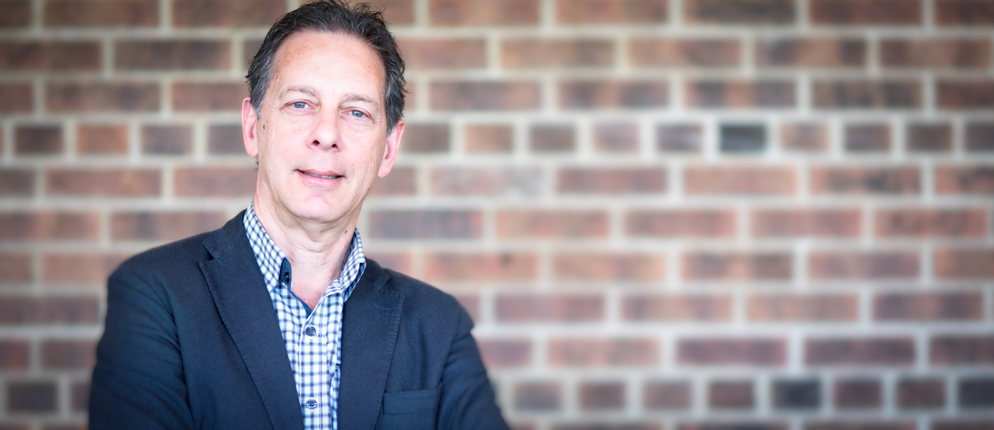- Future Students
- Current Students
- Faculty
- Staff
- Alumni
- Others
Exploring new ways of teaching, learning and being

There’s more than one way to run a classroom, and new research by Paul Sherman published in the journal Cogent Education, explores the approach taken by Soka education, a relatively new teaching movement from Japan. Prof. Sherman, who’s program head of Family and Community Social Services at the University of Guelph-Humber, says there’s a lot to learn, for our classrooms and our communities.
What is Soka education?
To understand Soka, we need to go back to its beginning in the Japan of the 1930s. There was an educator by the name of Tsunesaburō Makiguchi who practiced Nichiren Buddhism, a sect that believed that all people have within themselves the ability to find their full potential. Makiguchi believed this philosophy had a lot to offer education because the Japanese political and economic climate at the time was about expansionism and militarism. The Japanese government largely used schools to train students to be unquestioning and patriotic law-abiding citizens who deferred to the Emperor. Makiguchi saw first-hand that this wasn’t creating happy citizens, and so he developed the Theory of Value-creation (soka in Japanese) in response.
What are the tenets of Soka?
Soka fundamentally believes that the purpose of life is to achieve happiness and that education should guide people to do this. A life of happiness is all well and good, but how do you get to it? Soka says we achieve happiness by advancing the human condition through three aspects: beauty, gain and good. Beauty is experiencing aesthetic beauty, as you might see in nature or an art gallery — it’s a very subjective experience. Gain is creating value in your own life, for example by having positive relationships and connections with other people. Good has to do with creating social good and contributing to the welfare of your community. Soka says that happiness can only come when we build all three into lives, with social good as the foundation, and that no one aspect can come at the expense of the others.
What does this look like in a classroom?
I’ve visited Soka classes from kindergarten to university and there generally isn’t the same teacher-student dynamic that western-style education has. It’s not about the teacher depositing information into their students (as articulated by Paulo Freire), but to guide them through knowledge and help them to develop their inherent wisdom in using the knowledge gained. They’re more interested in having a dialogue, hearing from their students, encouraging friendships and learning from one another. Classes are horizontal, the students typically work in groups together. Rather than lecturing, the instructor converses.
How widespread is Soka education?
There are official Soka schools in 8 countries around the world but many more teachers globally who may use that teaching philosophy. In both Japan and California, there are Soka universities. One especially interesting success story is from a young teacher named Ryan Hayashi, a graduate of Soka University of America, who teaches in an American community that he says, “struggles with issues of severe poverty, violence, gangs, drugs, and discrimination.” Hayashi wanted to incorporate Soka principles into his teaching, and saw that math was a good place to start — his students couldn’t see the relevance of abstract mathematical concepts to their lives and so he tried to make it relatable. He developed algebra and geometry lessons based on his students’ knowledge of the murder rate in their community, which was much higher than the national average. With more relevant lessons, Hayashi found his students were more motivated and engaged in class, which led to improved math skills, and soon they began to advocate against these very serious and longstanding issues in their community. That was Soka education at work, using knowledge for a social good.
Where can University of Guelph-Humber students learn more about Soka?
I’m leading a Study Abroad course to Japan this year called “Soka Education and the Pursuit of Happiness”. The course will introduce students to Japanese culture, we’ll visit some shrines and temples, go to kabuki theatre, tour Tokyo, and then we’ll spend a day and a half at Soka University. They’ll meet students and instructors, hear lectures on Soka, and learn how it works in practice. After that we’re visiting Hiroshima, which will be an introduction to peace issues and peace studies. A large part of Soka is embracing and appreciating difference and cultivating a sense of global citizenship. This is a great way to do that.
Learn more about Prof. Sherman’s Study Abroad class.
Read Prof. Sherman’s article, “Value creating education and the Capability Approach: A comparative analysis of Soka education’s facility to promote well-being and social justice”.

